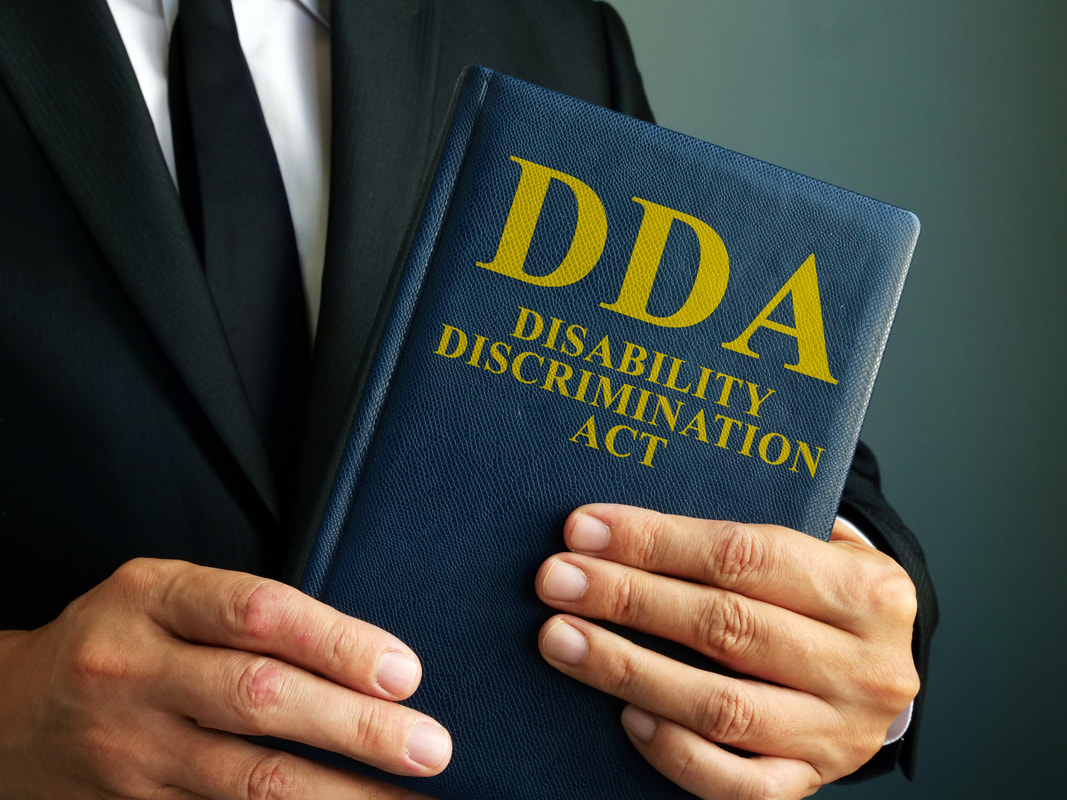|
Access v. Abuse: The ADA’s Impact in Silicon Valley
A San Jose father of three took his kids to their cousin’s 6th birthday party at a Chuck E. Cheese one afternoon a few weeks ago, but was stopped dead in his tracks the minute he entered the room. He watched as his kids excitedly ran up the stairs to greet their family members, their eyes hankering over the sight of pizza and arcade games awaiting them. But for 30-year-old wheelchair user David Tibbitts-Hernandez, there was no way for him to get up to the second floor to meet his kids. He scoured the room for an elevator or ramp but the restaurant didn’t have one, so he said goodbye to his kids — upset that he couldn’t stay — and turned back to go home. “I had to turn around and go back home and leave my kids there with their family,” Tibbitts-Hernandez told San José Spotlight in a recent interview. “As kids, they don’t necessarily understand.” Tibbitts-Hernandez’s experience speaks to the promise the Americans with Disabilities Act said it would provide nearly 30 years ago, demonstrating the barriers disabled individuals continue to face in public spaces. But for most Americans, those barriers often go unseen — performing regular activities such as opening a heavy door, dropping off a package or entering a building do not cross their minds. Though for millions of disabled people who perform these ordinary acts daily, there’s always the risk that a simple task can turn into an anxiety-inducing nightmare. The actions most people take for granted, he said, is what the disabled community often experiences challenges with every day, on top of the social stigmas they continue to face. The law, though well-intended, seems to have unintended impacts for both the people it was meant to help — such as Tibbitts-Hernandez — and small businesses that find themselves in the crosshairs of serial ADA lawsuits that force their closure, such as Crema Coffee, as first reported by San José Spotlight last week. “The people who are ‘violating the law’ don’t really know in most cases when they’re innocent, and they don’t have a ready ability to defend themselves, but being innocent isn’t an excuse,” said federal defense attorney Richard M. Hunt, who has specialized against ADA lawsuits for 15 years. “For small businesses, even if they think they could win the lawsuit they can’t afford it and that’s really how the law is getting exploited.” After 26 years, Tibbitts-Hernandez started using a wheelchair when his multiple sclerosis made it too difficult to walk. The transition took a toll on him and his family, as he relearned how to carry out simple tasks. It’s frustrating to lose one’s autonomy, he added, when a barrier or lack of access means having to ask strangers to reach for items that are too high on a grocery shelf or not even being able to comfortably use a public restroom. But the change also opened his eyes to all of the small challenges that disabled individuals are faced with daily. “Things became more difficult and everything had to be planned out ahead of time. Just going anywhere I have to know what the front of the place looks like, where I’m going to get into the door, or if the bathrooms are accessible,” Tibbitts-Hernandez said. “There’s a lot of places that I used to go to and enjoy but I can’t necessarily go to anymore. So when (businesses) don’t even care to make it accessible, it’s just discouraging.” History of ADA At least 55 million people in the U.S. have a severe disability that impairs their ability to perform functional tasks or prevents them from walking, talking, seeing or hearing, according to U.S. Census data. In California alone, the Center for Disease Control reported that a quarter of the state’s population has some type of disability. But for years, nothing secured the rights of disabled individuals, which meant that exclusion from schools, denied work opportunities and unaccommodating public transit services were all common occurrences. Disability rights activists long fought to secure equal rights to access, going as far as crawling their way up to the nation’s Capitol to make their case in the spring of 1990, physically pulling themselves up each step on their bare hands and knees. The famous event, dubbed the Capitol Crawl, was the catalyst that eventually pushed lawmakers to finally enact the ADA. Now, nearly three decades later, the ADA — a monumental civil rights law that prohibits discrimination against the disabled — has secured and upheld the rights of a minority group that would otherwise not receive the same kinds of access or opportunities as most people. Yet many businesses across California — and here in the heart of Silicon Valley — don’t do enough to make the disabled community feel welcome when a barrier or obstacle prevents them from entering or moving around in a public space, Tibbitts-Hernandez and others said, forcing them to stay home or meticulously plan an outing. Addressing serial litigators Unlike some disabled wheelchair users though, Tibbitts-Hernandez doesn’t want to sue, and according to Sheri Burns, the executive director for the Silicon Valley Independent Living Center, that’s not at the forefront of most disabled residents’ minds. It is only a handful of serial litigants and their unscrupulous attorneys who file thousands of ADA lawsuits in California against small businesses, some they haven’t even visited, in what critics call a “shake down” for minor violations. “Most people with disabilities are not interested in creating problems for other people. They want to be able to enjoy the access to the same public areas that everybody else does,” Burns said, adding that disabled residents’ biggest concern is being accommodated. In California, businesses getting slammed with ADA lawsuits are left to fend for themselves when serial complaint filers take advantage of the ADA and its state counterpart, the Unruh Civil Rights Act, and sue thousands of small businesses at once. For many of these attorneys, the hundreds of lawsuits they file prove to be a lucrative business, but often force mom and pop shops to close, as many owners can’t afford to bring their businesses up to code or settle. These two clashing realities have heart-wrenchingly twisted the conversation on ADA compliance, pitting small businesses and disability rights groups against one another in a moral impasse over fairness and principles. California accounts for nearly 40 percent of the country’s ADA lawsuits, according to the state’s Chamber of Commerce. Still, many disabled individuals fiercely dismiss claims that businesses can’t comply with the federal law for one reason or another, as plenty of time has passed for these owners to come to terms with its requirements. “They need to figure it out,” said Santa Clara resident Frances Merrill, 59, a wheelchair user born with cerebral palsy. “I know it can be hard financially… but that just means they’re not willing to think outside the box. The ADA has been around for 30 years. If you haven’t figured it out yet… it just makes people feel like you don’t want to.” And not complying with the law goes against an individual’s civil rights — comparable to racial discrimination, said Burns, who agrees more should be done about small businesses being hit with “drive by” lawsuits, but not at the expense of the disabled community. “Unscrupulous attorneys have made a good business bringing lawsuits, and this has been going on for quite a while,” Burns said. “So we’ve got to engage the local governments in the states to get involved in coming up with real solutions that don’t impact the civil rights of people.” Contact Nadia Lopez at [email protected] or follow @n_llopez on Twitter.
0 Comments
Leave a Reply. |
HISTORY
April 2024
Categories |
© Walk 4 Change. All rights reserved.


 RSS Feed
RSS Feed